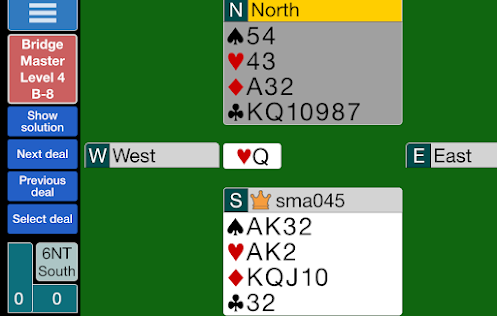BBO (Bridge Base Online) has a lovely system for practicing declarer play. Here is the B-8 problem in level 4:
The suggested solution says "we need to avoid losing 2 club tricks", and suggests leading twice to the KQ. The trouble is that we also need to make 4 tricks in clubs, there being no other likely source of tricks. Leading twice to the KQ fails this extra test when clubs break 4-1, unless East's singleton is the J. So I think it is better to play West for the J and finesse the 10, then return to hand to finesse the 9. On 4-1 breaks this gains when East's singleton is the A, 4, 5, or 6, only losing when it is the J.
The suggested solution goes on to say (approximately) "If East has Ax of clubs they will duck on the first lead to the K, to give declarer a problem next time. So if East wins the K with the A you should play East for AJ doubleton and just play the Q on the 2nd round." Well that can't be right. If declarer always cashed the Q after the K lost to the A initially, then East would always play the A with Ax so that partner will score their J with Jxx.
So clearly declarer should finesse the 10 on the 2nd round often enough that it is not an easy win for East to play the A with Ax. If both declarer and defender understand all this then each party has an optimal mixed strategy. This is called the Nash Equilibrium. It is simple in this case where each side has 2 options. For each player, both strategies must have the same reward. So I think that means that:
- With Ax, East should play the A a third of the time, so that when the A is played it is equally likely to be Ax or AJ.
- Declarer should finesse the 10 50% of the time and play the Q 50% of the time.
